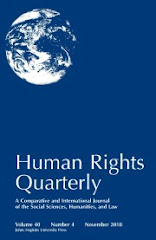Humanitarian intervention remains a very controversial area of international law. For many commentators the paradigm case is that of NATO's 1999 operation over Kosovo, but states are still divided on the legality of this use of force. As Kosovo pursues independence today the question whether it was created by the unlawful use of force is still important. The 2008 conflict between Russia and Georgia in Abkhazia and South Ossetia raises similar questions. The doctrine of humanitarian intervention is strongly opposed by the Non-Aligned Movement who see it as a pretext for intervention by powerful states. Few states openly support the legal doctrine; even fewer have relied on it to justify their use of force. Its legal basis is apparently an interpretation of Article 2(4) of the UN Charter which allows the use of force to further the purposes of the UN, in particular the protection of human rights. The UK is the foremost supporter in public. It has invoked the doctrine to justify the no-fly zones over Iraq, and has made attempts to draw up a legal framework to govern the use of force on behalf of the international community to prevent humanitarian catastrophes. However, in his secret Memorandum on the 2003 use of force against Iraq the UK Attorney-General acknowledged that the doctrine was controversial. The position of the USA remains uncertain: President Obama's 2010 US National Security Strategy is equivocal to say the least.
Recently there have been attempts to shift the focus away from this controversial doctrine to a new concept, that of the Responsibility to Protect. This was unanimously supported by the member states of the UN in the Outcome Document of the Millennium Summit, and was hailed as a major advance. There is some disagreement as to whether the use of force in the name of the Responsibility to Protect can be carried out only by the UN Security Council and whether it rules out the unilateral use of force by states. Various bodies within the UN have worked to elaborate on this concept and to further its implementation in practice, but it remains more an aspiration than an existing duty under international law.
Friday, August 30, 2013
Gray: The Use of Force for Humanitarian Purposes
Christine Gray (Univ. of Cambridge - Law) has posted The Use of Force for Humanitarian Purposes (in Research Handbook on International Conflict and Security Law, forthcoming). Here's the abstract:





